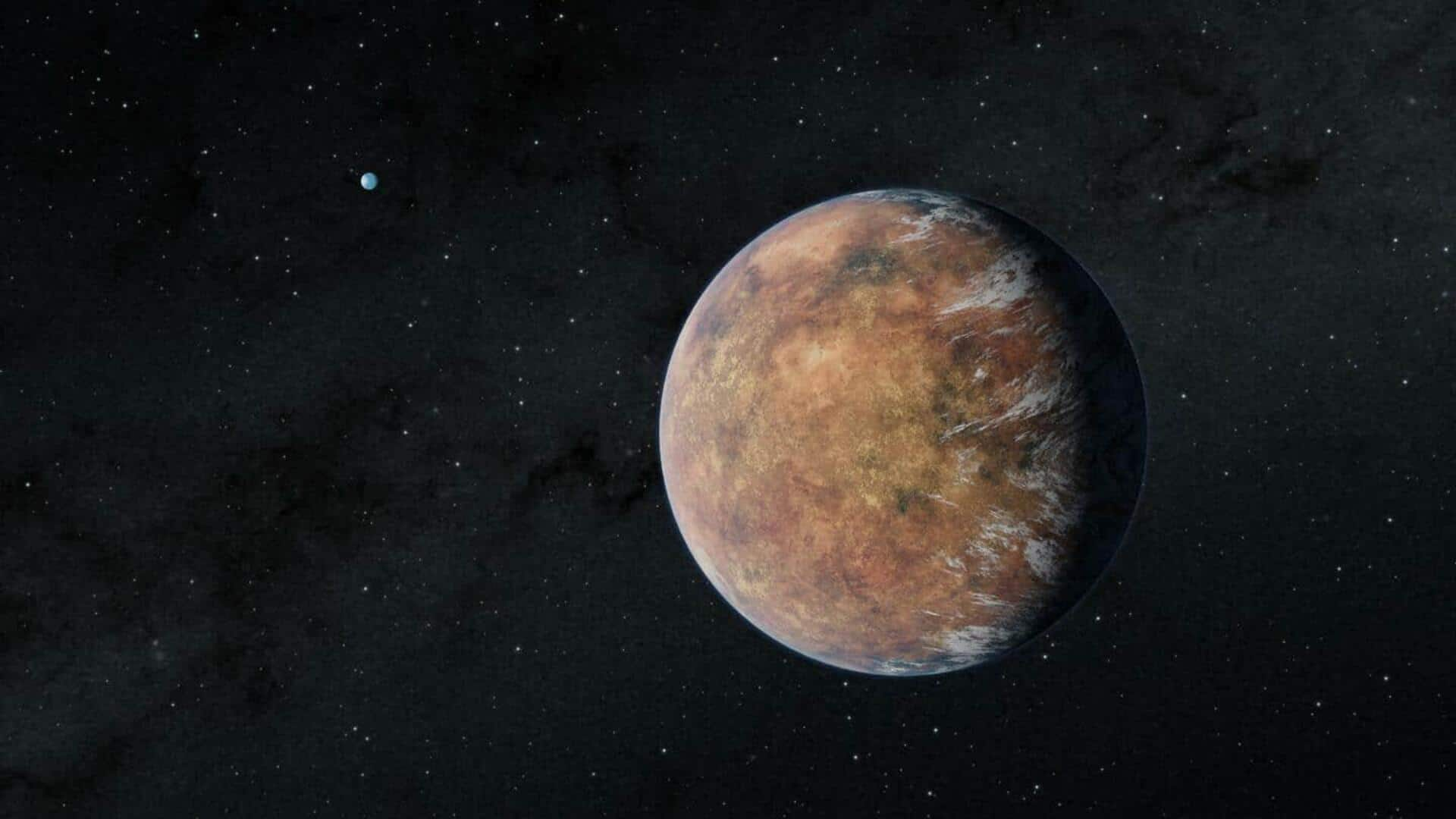
Could this Earth-like exoplanet be habitable? We may know soon
What's the story
Astronomers are hopeful about the possibility of confirming an Earth-like atmosphere on an exoplanet, thanks to the James Webb Space Telescope (JWST)'s observations. The planet in question is TRAPPIST-1e, part of a planetary system, TRAPPIST-1, located some 40 light-years away from Earth. Discovered in 2016 by Belgian astronomers, this unique system has been the subject of extensive research over the years.
Cosmic curiosity
A unique planetary system
The TRAPPIST-1 system is unlike any other, with a star the size of Jupiter and at least seven rocky planets orbiting it. Three of these planets lie in the habitable zone, where conditions could be just right for liquid water to exist if they have an atmosphere. This makes the system a prime candidate for studying potential extraterrestrial life.
Planetary potential
TRAPPIST-1e: A prime candidate for liquid water
Astronomers are particularly interested in TRAPPIST-1e, the fourth planet from its star. It has been identified as one of the best candidates for liquid surface water. The JWST made four observations of this planet in 2023, which did not rule out the presence of an atmosphere. This has fueled hopes that it could still have an Earth-like atmosphere capable of supporting life.
Atmospheric analysis
Ruling out hydrogen leads to nitrogen-rich possibilities
Astronomers look for signs of an atmosphere when a planet transits in front of its star, causing slight changes in the starlight that passes through. These changes can reveal clues about the planet's atmospheric composition. In TRAPPIST-1e's case, the JWST ruled out a primary hydrogen-based atmosphere, likely stripped away by intense radiation from its star. This finding suggests a nitrogen-rich atmosphere could be possible, similar to Earth's or Saturn's moon Titan.
Future prospects
Ongoing observations to continue until end of year
The research team plans to complete a new set of 15 observations by the end of this year, with two-thirds already finished. If they find definitive evidence of an atmosphere, further JWST observations could be conducted to look for chemical signatures of gases like methane. This would be a major breakthrough in our understanding of habitability beyond Earth.
Atmospheric implications
Implications for our understanding of habitability
The confirmation of an atmosphere on TRAPPIST-1e would settle a major debate over whether red dwarf systems can sustain atmospheres. This could greatly expand the possibilities for life in the universe. Even if no atmosphere is detected, it would highlight Earth's uniqueness and pave the way for future studies of exoplanets around yellow dwarf stars like our Sun.